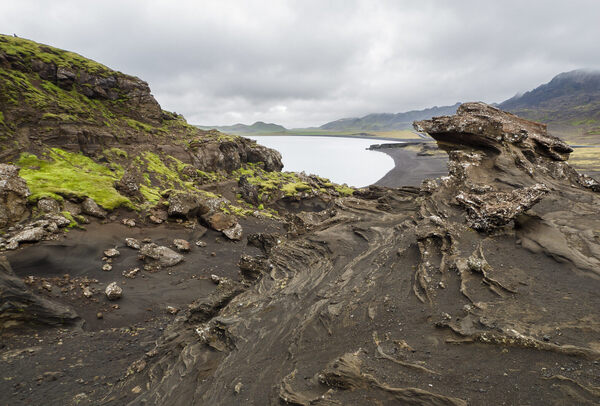This story was originally published in The Conversation and appears here under a Creative Commons license.
More than 17,000 earthquakes was recorded in southwest Iceland, on the Reykjanes Peninsula, in just over a week. People living in the area have been advised to take extra care due to the dangers of landslides and falling rocks. Many of the biggest earthquakes have been felt in Iceland’s capital, Reykjavík – where more than half of the population lives – which is just 27 kilometers (17 miles) away.
This raised concerns about the effects of even greater earthquakes and also of a possible eruption of the Krýsuvík volcanic system in the area.
Southwest Iceland has a history of centuries of calm, which we know can be broken by turbulent periods of intense seismic activity accompanied by volcanic eruptions. It looks like we’re entering the next turbulent period.
The latest earthquake swarm is actually the latest in a period of significantly heightened seismic activity that began more than a year ago. The earthquake is the most obvious manifestation of the release of large amounts of energy. But magma has also been silently accumulating near the surface – and when that happens, the surface is more likely to rupture and volcanoes to erupt.
On March 3, the concern increased dramatically when a type of seismic activity characteristic of the magma’s movement was detected, indicating that an eruption may be imminent. Civil Defense and other officials held press conferences, closed roads and intensified visual surveillance of the area above the potential eruption site. Sure, the magma can move in the crust and then stop, but it is always wiser to plan for an eruption and then subside if nothing happens.

The problem is that the last time southwestern Iceland experienced such a turbulent period of earthquakes and volcanic eruptions was in the 13th century – when there was no equipment to monitor seismic activity. There were also far fewer people around, which means that we don’t really know what signs existed before the eruptions occurred. Therefore, there are great uncertainties.
However, Iceland has a world-leading network to monitor seismic and volcanic disturbances and an excellent track record of anticipating eruptions and maintaining the safety of its population. So, if an eruption happened, chances are that everything will go well.
An eruption in this area will be nothing like the highly disturbing explosive eruption of Eyjafjallajökull in 2010, or the much larger, but much less disturbing explosive eruption of Grímsvötn in 2011. The eruptions in southwest Iceland are of a type of fluid rock called basalt . This results in slow lava flows fed by craters and cones that explode smoothly.
In Iceland, they are warmly called “tourist flares”, as they are relatively safe and predictable and offer the opportunity for many hundreds of people to witness a magical natural spectacle – the creation of new lands. In the past, tourists flocked to Iceland to witness these eruptions, but today there is a five-day quarantine period for tourists entering Iceland due to the pandemic.
In the current hustle and bustle area, there are no houses nearby – it is reassuringly remote. It is very unlikely that streams of lava flowing away from the area will damage any property on the planned paths, but if the lava reaches the sea, it will block some roads.

The biggest international concern about a volcanic eruption in Iceland is the disruption of air travel. Not only can winds blow ash clouds quickly to Western Europe (as we saw with the Eyjafjallajökull eruption in 2010), but ash clouds can rise in the atmosphere and the stratosphere, where commercial airlines travel down the flight corridors of the Bustling Atlantic.
But volcanoes in southwest Iceland tend not to produce much ash, so the risk of disrupting international air travel is considered to be very small. If an eruption begins, flights will be stopped automatically at Keflavík International Airport, which is just 22 kilometers (about 14 miles) away, until a more thorough assessment is carried out.
The wind direction has a big effect here, and since the prevailing wind is from a west direction and Keflavík is on the west side of this southwestern peninsula, the winds should take any ash away from Keflavík. The crucial effect of wind direction was highlighted beautifully in 2010, when Keflavík Airport remained open while Western European airports remained closed for weeks.
While current COVID-19 restrictions on entry into Iceland prevent hordes of tourists from traveling to see a possible eruption, there will be many Icelanders traveling to observe it. They have a peculiar saying in Iceland “while in most countries people generally flee volcanic eruptions, in Iceland we usually run towards it”.
Dave McGarvie is a volcanologist at Lancaster University.
